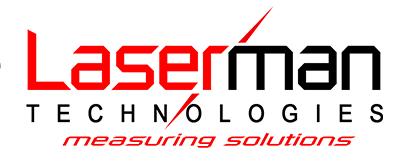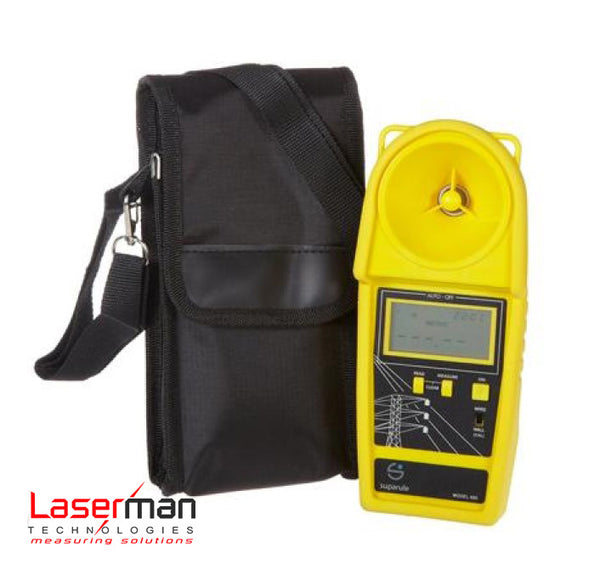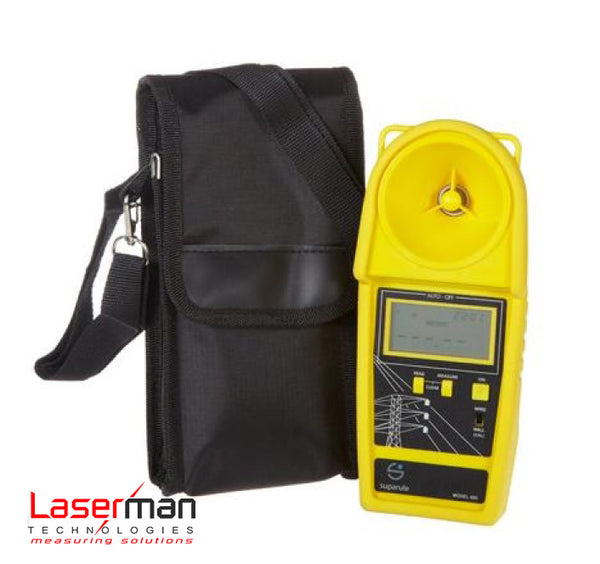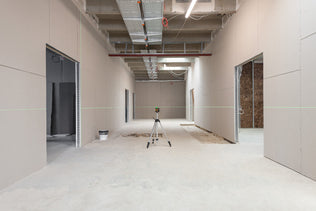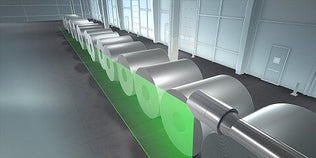It is impossible to imagine any stonemasonry firm without the bridge saw: it is the universal tool for cutting up natural stone slices into a wide variety of formats or for processing kitchen worktops, for example. It takes its name from the moveable cross beam, which rests like a bridge on two pillars or supporting walls. The so-called support, the actual processing unit, is mounted on the bridge. The most common tool is the diamond cutting disc, which is available in all possible sizes and degrees of hardness. The support can be moved in x and y direction as well as turned. On modern machine types (rotary head saws or 5-axis CNC machining centres) the disc can also be inclined to the vertical at any angle to achieve mitre cuts.
Natural stone is a precious material. All the more reason to avoid waste or rejects. This starts with the positioning of the stone on the milling table: how do I get the best out of my slab? This is where the line laser comes into play: a red or green line indicates where the – pre-programmed – cut will run. Such a laser can basically be mounted and used in two ways:
Mounting in the area of the bridge support:

From this position the line laser can cover the entire table. Disadvantage: the line runs exclusively in x-direction and can only be moved in y-direction with the entire bridge. Most machine makes have a shaft with ø20mm or ø22mm as mounting option. Here the laser can be mounted with a rotatable block mount of the H0 series and adjusted in the desired position. Important is the inclination of approx. 45° to the horizontal.
Mounting on the support:

Since the laser is mounted significantly lower, the line is of course not as long, but can be swivelled with the support in all conceivable directions. A combination of both mounting options has proven to be a good solution. On the support housing the laser can be screwed to a bracket of the H2 series; if there is a mounting shaft with ø20mm or ø22mm, the H0 is used as above.
The power supply is either via a separate plug-in power supply unit model WPS or directly from the machine control with 24VDC.
Challenge to the laser:
Line lasers in the natural stone sector must be robust and waterproof and also be clearly visible on dark stone in a bright working environment. For years, red lasers with 15-40mW output power have been used, meanwhile the green line lasers have become the industry standard.
Z-LASER recommendation:
Models from the ZM18 series: Red laser with 15-30mW(=milliwatt) output power or green laser with 30mW for bridge mounting (1). Red or green laser with 5-10mW for mounting on the support (2). We will be happy to advise you on the selection of the appropriate product.

